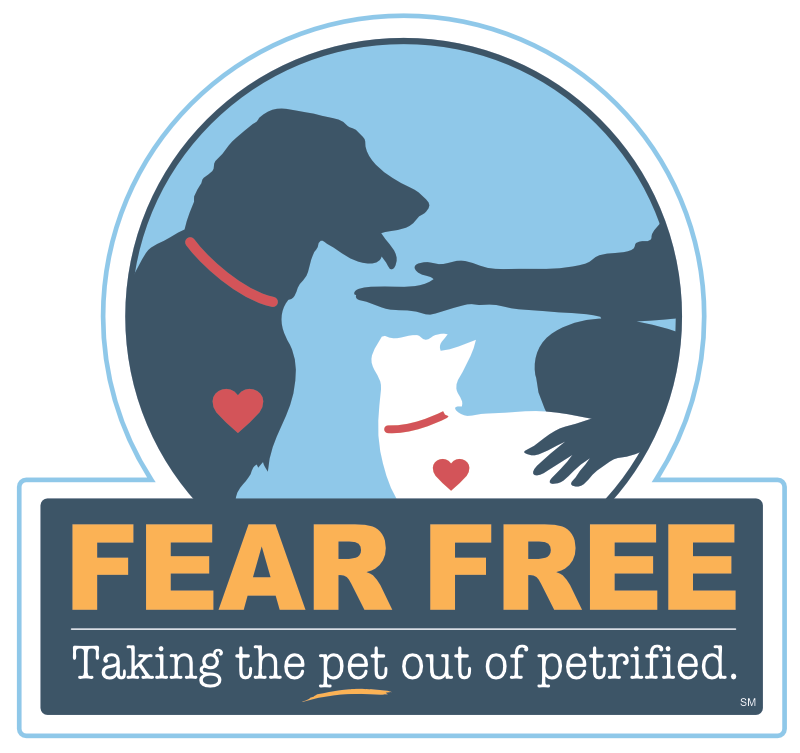Fear Free Certified
Any time your pet feels threatened, whether that threat is real or imagined, changes occur immediately within his or her body to prepare for fight or flight. These changes occur because your pet’s nervous system releases a variety of stress hormones that have profound effects across many different systems in the body.
The release of these hormones results in the immediate availability of energy and oxygen intake and decreases blood flow to areas not critical for movement. This can also inhibit digestion, growth, immune function, reproduction and pain perception.
Why It Matters
When your pet is under stress, the memories of any events occurring during that time will be very powerful, and how your pet is handled during veterinary visits may have long standing consequences for our future ability to handle him or her.
Why We Choose Lower-Stress Handling
When stressors are unremitting and the stress response continues, virtually every system within the body can be pathologically affected to varying degrees—cardiovascular, metabolic, reproductive, gastrointestinal, immune and skin.
The results can include myopathy (muscle disorders), fatigue, hypertension, decreased growth rates, gastrointestinal distress and suppressed immune function.
Chronic stress can even lead to structural and functional changes in the brain, and, when extreme conditions persist, permanent damage can result.
What Fear Free Looks Like
Being Fear Free℠ means putting your pet’s emotional well being at the center of everything we do. It means there are no longer “standard procedures” for… well, anything. There is only what works for your pet in that moment, makes them comfortable, and builds a foundation of trust for future visits.
What You Can Expect
We may ask to do more of the visit in the room, with you present. (Unless that doesn’t work for your pet. Then we will try something different.)
We may ask you to bring your pet slightly hungry, and keep them happily distracted with lots of high-value treats while we administer vaccines. (Unless your pet responds better to gentle praise or touch instead.)
We may ask you to come in for “happy visits,” where we don’t do anything except show your pet love and encouragement, and teach them that this is a safe place.
We may give you medication, herbs, or supplements to give your pet at home, to calm them before the appointment.
We will always be listening to what your pet is telling us, and promise to change what isn’t working.
We will never just “get it done” at the cost of your pet’s trust or emotional well-being.
Because positive experiences at the vet are so important to your pet’s long-term well-being, if things are just not working despite our best efforts, we may ask to try again another day.
Why We May Ask to Stop a Visit
When pets show subtle signs of fear or anxiety during a veterinary visit, if we proceed without attempting to alleviate the stress, we may not change the pet’s behavior at that time, but the pet will learn from the experience and will likely behave in a more fearful manner at the next visit.
Anything we do to relieve the stress of the visit will pay off in future visits being less difficult for your pet. Remember that frequent, distressing experiences can negatively impact an animal’s overall health and well-being.
Also, by continuing with a procedure when an animal is showing signs of anxiety, we are teaching the animal that its normal means of communication is meaningless. If we do that, what recourse might that animal have but to develop other less tolerable means of communicating its discomfort?
To avoid this scenario, when we identify signs of fear— especially during elective procedures—we may stop the visit and ask you to return at a later time when the pet is less stressed.

Have a Question? Get In Touch.
The best veterinary care for animals is ongoing nutrition and problem prevention.
If you have a question, please call (847) 669-6635 or visit our Contact Us page to send an email!
